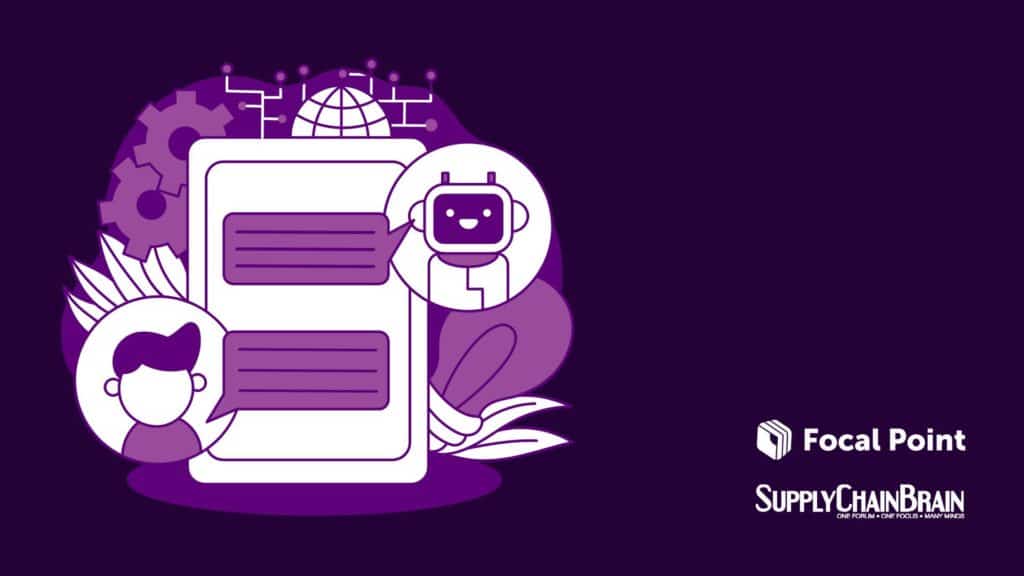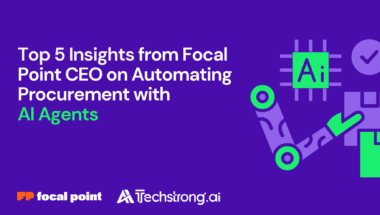Generative artificial intelligence (GAI) is coming, and the ability of procurement organizations to adopt it quickly, safety and securely could be key to their success in 2023 and 2024.
The market for generative AI is projected to jump from $11.3 billion to $51.8 billion by 2028. This represents a sea change, one that will completely reinvent how enterprises operate both internally and for customer-facing initiatives.
There’s a lot of uncertainty as companies rush to understand where they can apply GAI. How will it affect marketing and advertising, customer service, finance and accounting, and procurement? Yet despite this lack of clarity, GAI presents new opportunities for innovation.
Procurement as a business function has evolved rapidly. Once a department charged primarily with cost savings, procurement today has a much larger seat at the table. GAI has the potential to further accelerate change, as part of a business-wide digital transformation. But before organizations dive headfirst into the technology, it’s important to understand what makes for a successful implementation. Procurement leaders need to step back and ensure that the foundations are there to derive meaningful value from GAI, whether it’s built in-house or purchased as part of a larger procurement technology package. Following are some essential tips for proceeding.
Decide how you will embrace GAI.
Before an enterprise can even think about implementing GAI into its procurement operations, it has to take stock of its automation processes. Has it moved data from spreadsheets into a larger workflow automation solution? Which aspects of procurement have been automated, and where does automation leave off and human decision-making take over?
To reap the full benefits of the technology, chief procurement officers should decide exactly what part of the procurement function can be hyper-automated with GAI. From initial intake to discovering new suppliers that fit a unique use case, building contingency plans for supplier disruptions, and quickly accessing answers from dozens of supplier contracts, GAI has the potential to do a lot. But without the fundamental technology in place, and a true vision of how exactly GAI will be deployed, it can become a costly investment that goes underutilized (similar to so many use cases of AI in general).
Set up a data collection and organization process.
Imagine a future where procurement professionals ask a GAI-powered chat to show them the best supplier based on unique and specific criteria. However, without the ability to collect and organize data for training the AI, those efforts will sputter. Worse yet, they could lead to horribly wrong decisions where money and brand reputation are on the line.
An appropriate process should involve gathering data from across the organization and eliminating silos to ensure a comprehensive and representative dataset. This means having a solution that unifies all of your procurement data that is shared and accessible by different departments — including accounts payable, legal and IT — and provides a holistic view of operations.
Visualize what you generate.
In addition to data collection and security, the power of GAI can only be realized through effective visualization. Tools for that purpose play a crucial role in translating complex AI-generated insights into valuable information for business decision-making.
Dashboards and decision boards provide intuitive and interactive displays that allow stakeholders to comprehend and analyze information effectively. By presenting the output of GAI in a visually appealing and easily understandable manner, organizations can enable their teams to make informed decisions and drive meaningful outcomes.
For example, if a main supplier for a critical product is based in Mumbai and there is a major earthquake there, GAI can help identify the next best suppliers in and out of the network based on location, price and even factors such as environmental, social and governance (ESG) compliance and supplier diversity. However, quick decisions depend on this data being visualized in a way that decision-makers can easily consume — for example, in the form of a map overlayed with supplier information.
To achieve this, organizations should foster a culture where any and all new data-driven technology is supported with business consumption in mind. This requires partnering with providers that specialize in data engineering and building visual dashboards or decision boards with the user experience and design thinking top of mind.
In the not-so-distant future, GAI will be available to every procurement manager. Some use cases will be highly interactive. Others will have GAI simply baked into the cake, quietly working in the background to optimize productivity and serve as the basis for better data-based decision-making.
Be cautious not to get caught up in the hype without building the infrastructure and guardrails to guide and focus your efforts. Otherwise, GAI implementation will see the same fate as many other digital transformation efforts: an uncoordinated initiative lacking broad organizational buy-in and adoption.
Anders Lillevik is chief executive officer of Focal Point. This article originally appeared in Supply Chain Brain.



